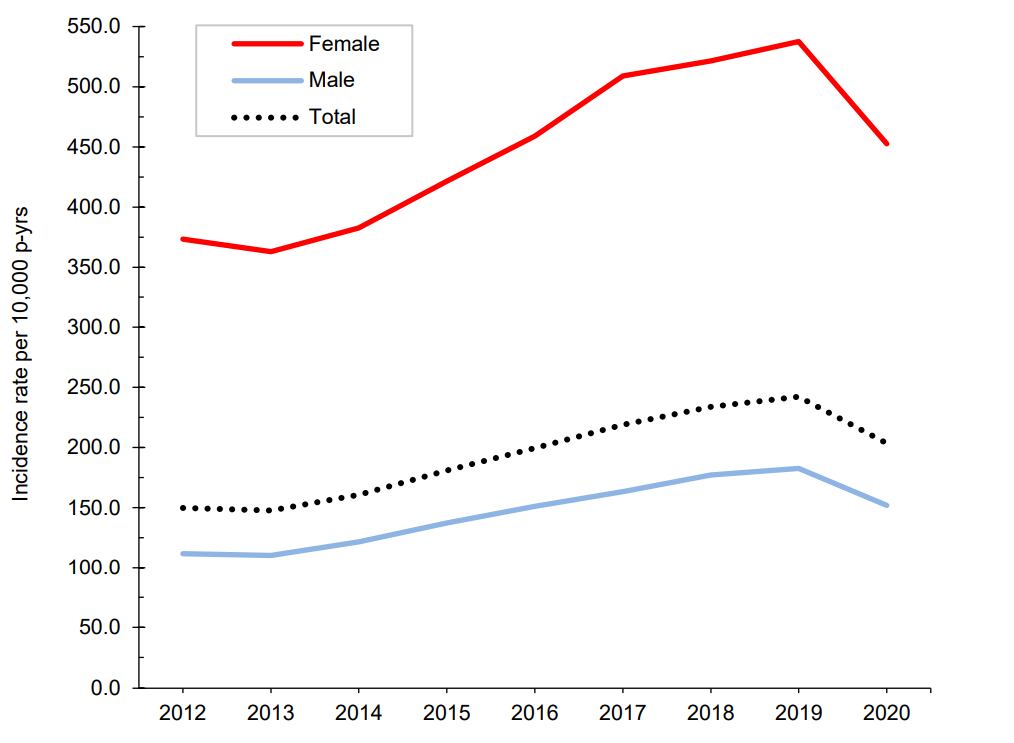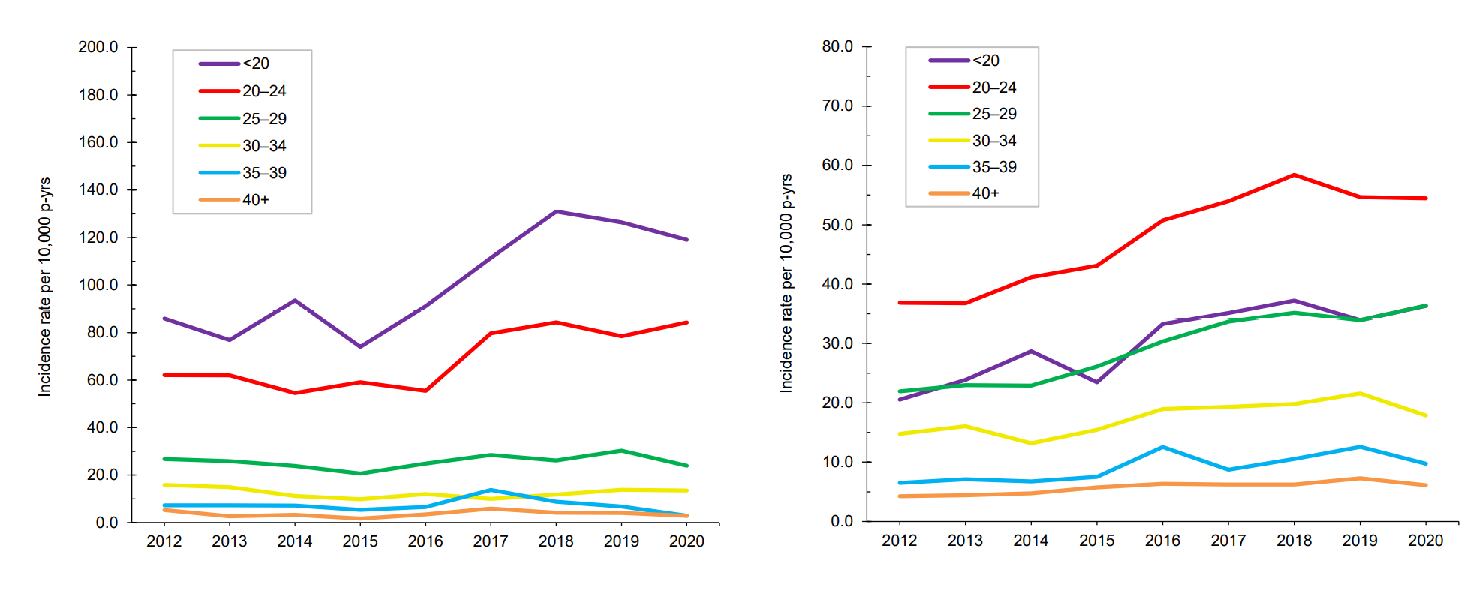Cases of chlamydia, gonorrhea and syphilis have increased significantly across the military over the past eight years, a study found.
Black service members, women, and enlisted personnel with lower levels of education are most at risk of contracting sexually transmitted infections, according to the study published in the March edition of the Medical Surveillance Monthly Report, a peer-reviewed military health journal.
The study analyzed administrative data and reports from all four branches of the military to provide a comprehensive picture of STIs between 2012 and 2020, using medical and diagnostic codes to identify instances of the five most common STIs — chlamydia, gonorrhea, syphilis, genital herpes and human papillomavirus, or HPV.
Patterns in STI frequency mirrored those of the civilian population, but rates of infection in the military were in many cases disproportionately higher.
Of the four branches, the Army had the highest rates of chlamydia, gonorrhea and genital herpes. The Navy had the highest rates of syphilis, and the Air Force had the highest rates of HPV.
RELATED

Motor transportation workers had higher rates of chlamydia, gonorrhea and syphilis than any other occupational specialty, while health care occupations had higher rates of HPV. Communications and intelligence specialists, alongside transportation and health care occupations, displayed the highest rates of genital herpes.
Service members under the age of 24 were found to be the most likely to contract an STI, accounting for almost 64 percent of observed cases.
Rates of infection decreased steadily with age, but STIs can having lasting effects regardless of the age at which they’re contracted. An HPV infection, for instance, can cause cervical cancer and congenital infections years later, according to the National Cancer Institute.
While chlamydia, gonorrhea, and syphilis infection rates increased during the period of the study, HPV and genital herpes declined in frequency. According to the study, this could be in part due to the prevalence of the HPV vaccine, which has been available for more than a decade now.
The 2015 Health Related Behaviors Survey, the most recent DoD survey of sexual behaviors available, found that in the past year 19.4 percent of respondents had more than one sexual partner and 36.7 percent had unprotected sex with a new partner. Men and women had no significant statistical differences on these behaviors.
The survey concluded that service members’ sexual behaviors may present increased risk of contracting STIs.
To limit the spread of STIs, the Military Health System and Centers for Disease Control and Prevention recommend limiting anonymous sexual encounters, avoiding unprotected sex of any form, limiting number of sexual partners, and not having sex while under the influence of drugs or alcohol. MHS also advises service members not to assume it will be obvious whether or not their partner has an STI.

According to data from the CDC, chlamydia infections increased in frequency in the civilian population by just under 20 percent from 2012 to 2018, the latest year for which the CDC’s STI data is available.
Military cases of chlamydia, however, increased by 64 percent between 2013 and 2019. Women contracted the infection at nearly three times the rate men did.
Although military cases of chlamydia began to decline in the final year of the study, the average rate from 2012 to 2020 was 192.4 cases per 10,000 people per year. Even at its highest recorded point in 2018, the rate of chlamydia infections in the civilian population was only about 54 cases per 10,000 people.
Likewise, gonorrhea cases increased steadily in both the military and civilian populations. Despite military cases decreasing in the final two years of the study, the military’s reported average rate of 30.2 cases per 10,000 people per year from 2012 to 2020 far outpaced civilian rates, which ranged from 10.7 to 17.9 between 2012 and 2018.

Civilian and military rates of syphilis more than doubled between 2012 and 2018. Military cases began to decline in 2019 and 2020, but still sit at 2.2 times the rate observed in 2012. On average, men contracted syphilis at 1.3 times the rate of women in the military. Men in the civilian population also contract syphilis at significantly higher rates than women.
Female service members had significantly higher incidence rates than their male counterparts for every other STI observed.
This disparity could likely be attributed to better STI screening programs available for women, according to the study. Improved screening availability for men over the period of the study could also have contributed to increased case counts.
Harm Venhuizen is an editorial intern at Military Times. He is studying political science and philosophy at Calvin University, where he's also in the Army ROTC program.




